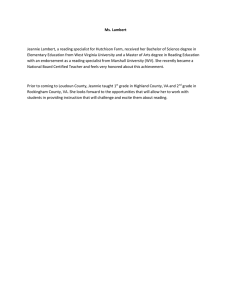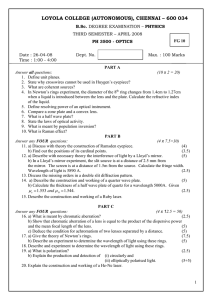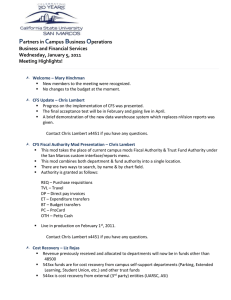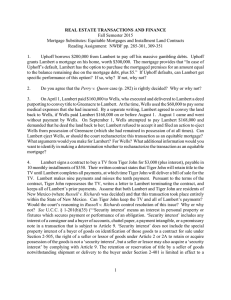Mathematics 309 — Spring 2004 — Sample questions based on...
advertisement
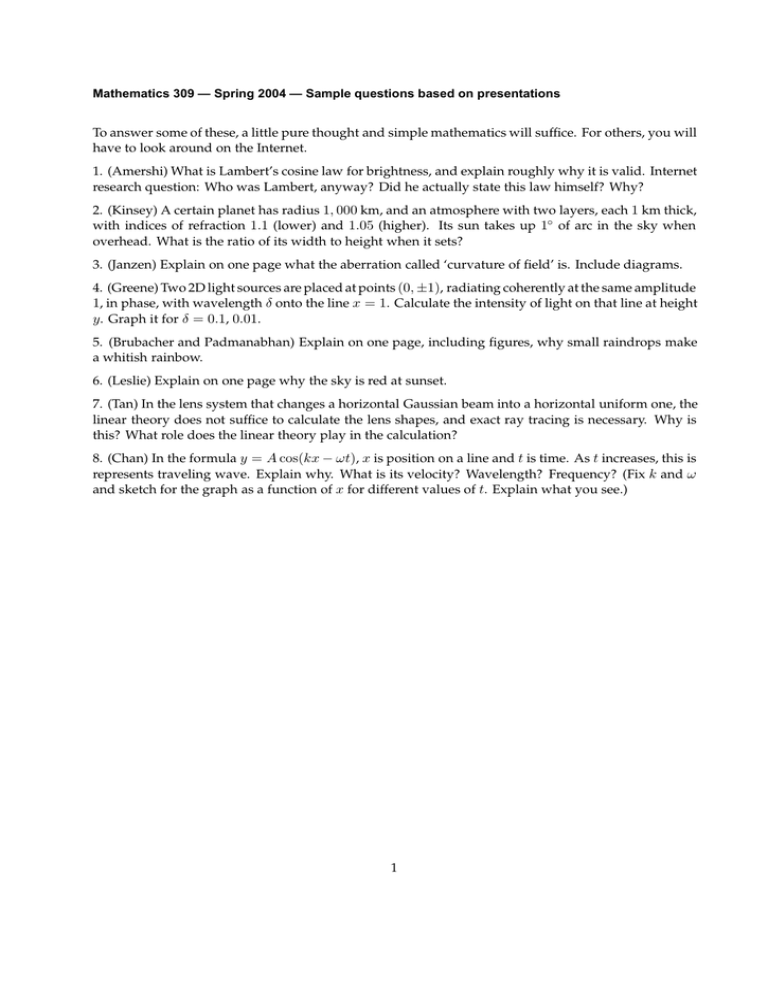
Mathematics 309 — Spring 2004 — Sample questions based on presentations To answer some of these, a little pure thought and simple mathematics will suffice. For others, you will have to look around on the Internet. 1. (Amershi) What is Lambert’s cosine law for brightness, and explain roughly why it is valid. Internet research question: Who was Lambert, anyway? Did he actually state this law himself? Why? 2. (Kinsey) A certain planet has radius 1, 000 km, and an atmosphere with two layers, each 1 km thick, with indices of refraction 1.1 (lower) and 1.05 (higher). Its sun takes up 1◦ of arc in the sky when overhead. What is the ratio of its width to height when it sets? 3. (Janzen) Explain on one page what the aberration called ‘curvature of field’ is. Include diagrams. 4. (Greene) Two 2D light sources are placed at points (0, ±1), radiating coherently at the same amplitude 1, in phase, with wavelength δ onto the line x = 1. Calculate the intensity of light on that line at height y . Graph it for δ = 0.1, 0.01. 5. (Brubacher and Padmanabhan) Explain on one page, including figures, why small raindrops make a whitish rainbow. 6. (Leslie) Explain on one page why the sky is red at sunset. 7. (Tan) In the lens system that changes a horizontal Gaussian beam into a horizontal uniform one, the linear theory does not suffice to calculate the lens shapes, and exact ray tracing is necessary. Why is this? What role does the linear theory play in the calculation? 8. (Chan) In the formula y = A cos(kx − ωt), x is position on a line and t is time. As t increases, this is represents traveling wave. Explain why. What is its velocity? Wavelength? Frequency? (Fix k and ω and sketch for the graph as a function of x for different values of t. Explain what you see.) 1



